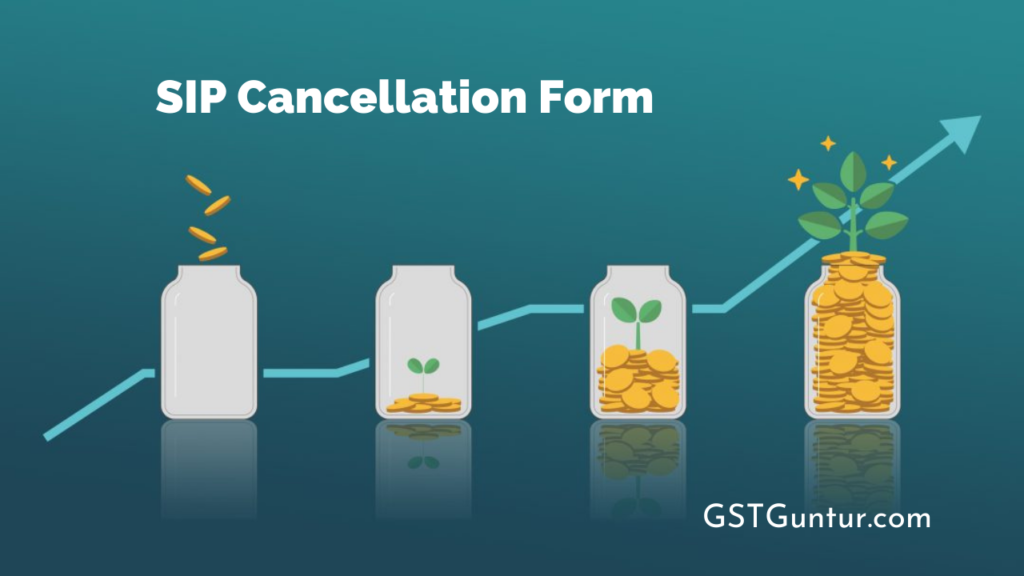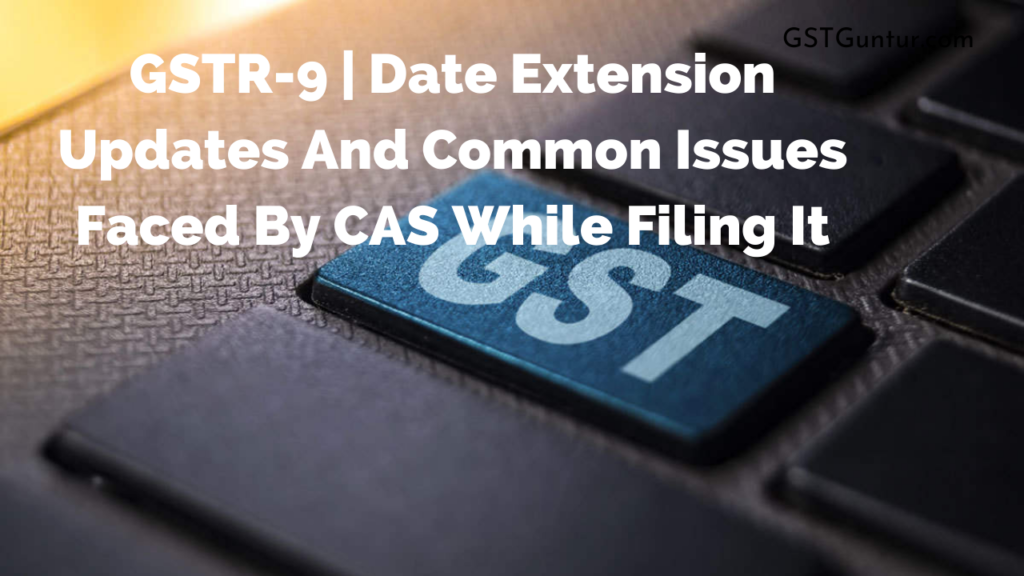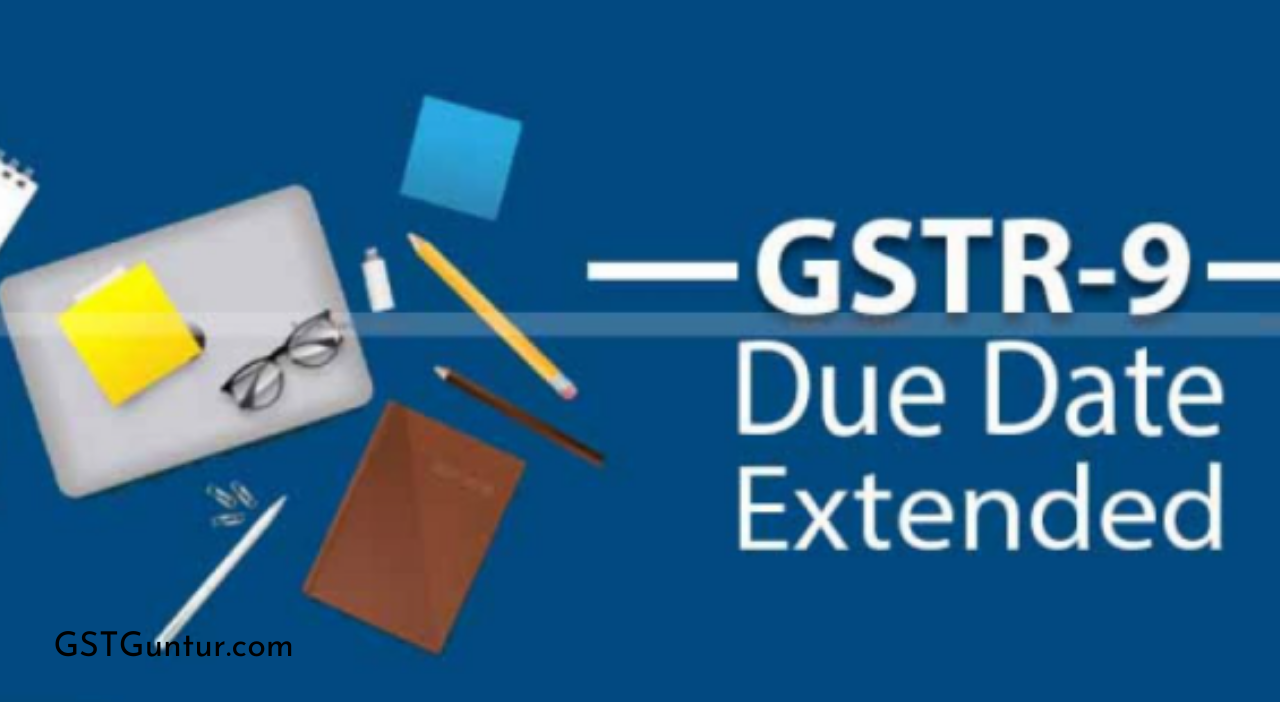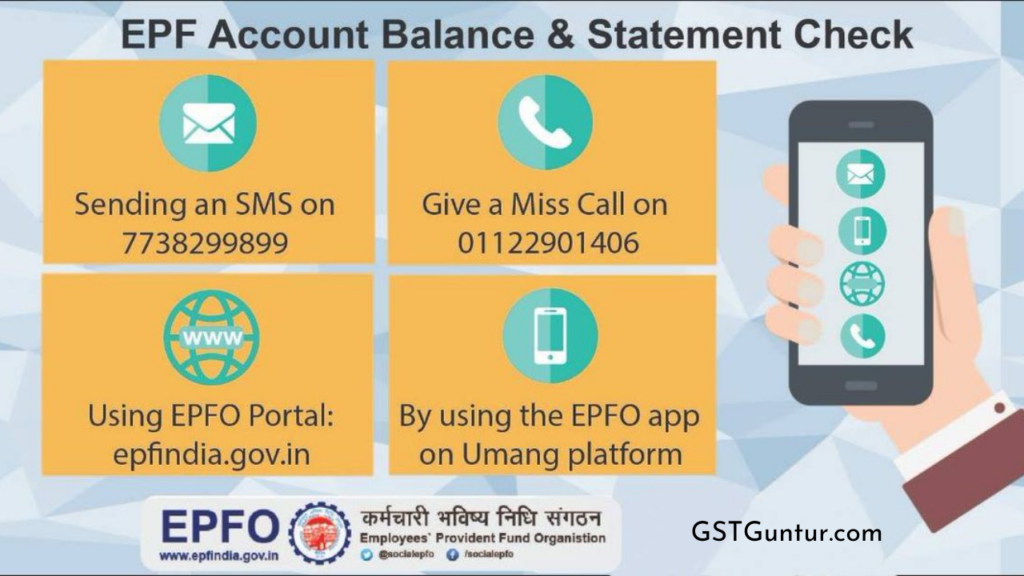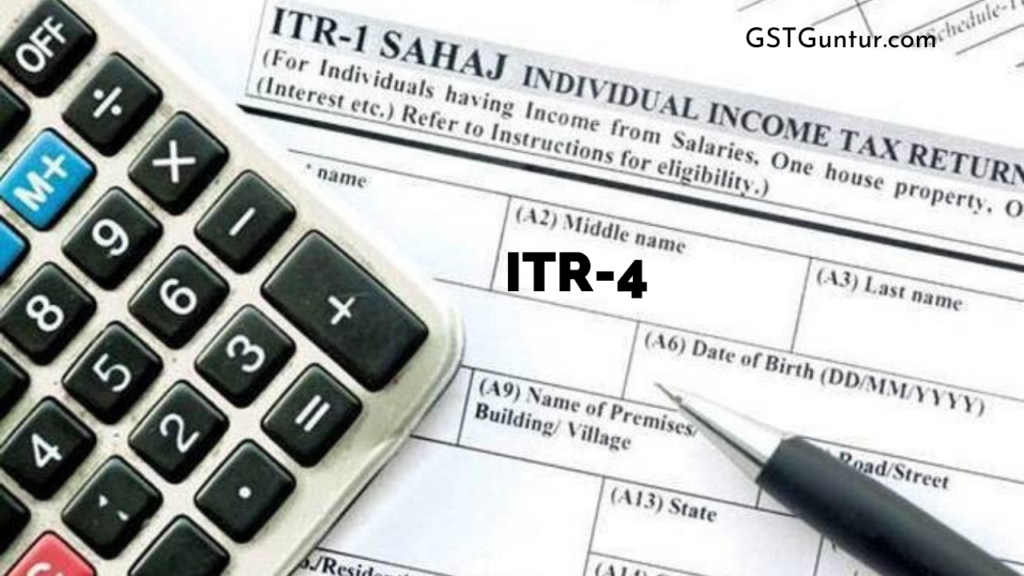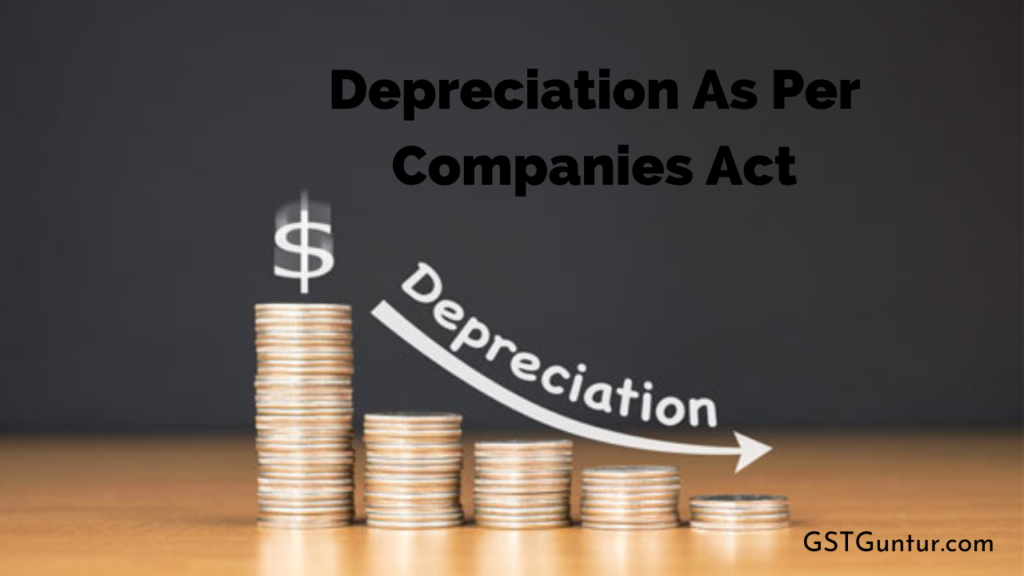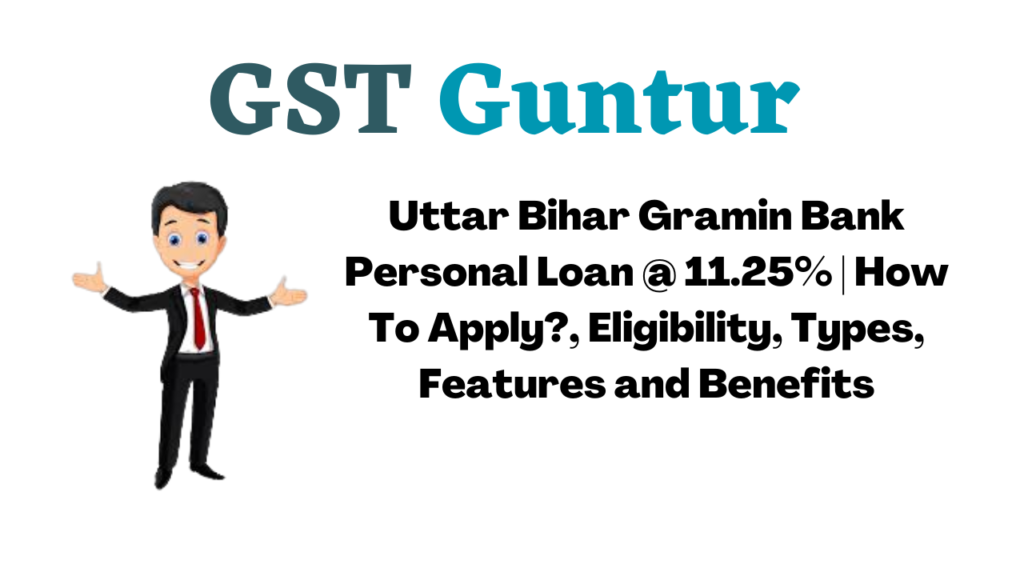Limited Liability Partnership Act, 2008 – CMA Inter Law and Ethics Study Material
Limited Liability Partnership Act, 2008 – CMA Inter Business Laws and Ethics Study Material is designed strictly as per the latest syllabus and exam pattern.
Limited Liability Partnership Act, 2008 – CMA Inter Law and Ethics Study Material
Distinguish Between
Question 1.
Briefly explain the difference between Partnership and Co-ownership. (June 2014, 4 marks)
Answer:
Difference between Partnership and Co-ownership.
| Basis of Distinction | Partnership | Co-ownership |
| 1. Agreement | It arises from an agreement. | It may or may not arise from an agreement. |
| 2. Business | It is formed to carry on a business. | It may or may not involve carrying on a business. |
| 3. Profit or Loss | It involves profit or loss. | It may or may not involve profit or loss. |
| 4. Mutual agency | Partners have a mutual agency relationship. | Co-owners do not have a mutual agency relationship. |
| 5. Name of persons involved | The persons who form partnership are called partners. | The persons who own some property jointly are called owners. |
| 6. Maximum limit | A partnership with object of acquisition for gains cannot be formed beyond 50 numbers of partners [Section 464 read with Rule 10 of Companies (Miscellaneous) Rules, 2014 | There is no maximum limit of owners. |
| 7. Transfer of interest | A partner cannot transfer his share to a stranger without the consent of other partners. | A co-owner can transfer his share to a stranger without the consent of other co-owners. |
| 8. Right to claim partition | A partner has no right to claim partition of property but he can sue the other partners for the dissolution of the firm and accounts. | A co-owner has the right to claim partition of property. |
| 9. Lien on property | A partner has a lien on the A co-owner has no such partnership property for lien. | expenses incurred by him on behalf of the firm. |
Descriptive Questions
Question 2.
(i) Who is a Partner by “Holding Out” or “Estoppels”? (Dec 2013, 2 marks)
Answer:
If any person behaves and/or poses or presents in such a way that others consider him to be a partner, he will be held liable to those persons who have been misled, suffered or lent finance to the firm on assumption that he is a partner. Such a person is known as ‘Partner by Holding out or Estoppels.” He is not a true partner and he is not entitled to any share in the profit in the firm.
Question 3.
Answer the question:
What tests would apply for determining the existence of partnership? Discuss. (June 2015, 3 marks)
Answer:
As must be clear from the discussion of various elements of partnership, there is no single test of partnership. For example, in one case there may be sharing of profits but may not be any business, in the other case there may be business but there may not be sharing of profits, in yet another case there may be both business and sharing of profits but the relationship between persons sharing the profits may not be that of principal and agent. And in either case, therefore, there is no partnership.
Thus, all the essential elements of partnership must coexist in order to constitute a partnership. To emphasize this fact, Section. 6 expressly provides that “in determining whether a group of persons is or is not a firm or whether a person is or is not a partner in a firm, regard shall be given to the real relation between the parties, as shown by all relevant facts taken together.” Thus, the existence of a partnership has to be determined with reference to the real intention of the parties, which must be gathered from all the facts of the case and the surrounding circumstances.
![]()
Question 4.
State your views on the following:
A partner is not an agent of other partners in a partnership firm. (June 2016, 2 marks)
Answer:
Incorrect: The basis of the partnership is mutual agency, hence a partner is an agent of all other partners.
Question 5.
What are the rights of outgoing partners? (June 2017, 9 marks)
Answer:
Rights of outgoing partners
Section 36 provides that an outgoing partner may carry on a business competing with that of the firm. He may advertise such business, but, subject to contract to the contrary, he may not:
- use the firm name;
- represent himself as carrying on the business of the firm; or
- solicit the custom of persons who were dealing with the firm before he ceased to be a partner.
Section 37 provides that in case where a partner has died or ceased to be a partner, the surviving and continuing partners may carry on the business of the firm with the property of the firm without any final settlement of accounts as between them and the outgoing partner or the estate of deceased partner. In the absence of a contract to the contrary, the outgoing partner of the representative of the deceased partner is entitled at the option:
to such share of the profits made since he ceased to be a partner as may be attributable to the use of his share of the property of the firm; or
to interest at 6% per annum on the amount his share in the property of the firm.
Where an option is given to surviving or continuing partners to purchase the interest of a deceased or outgoing partner and the same is duly exercised, the estate of the deceased partner or the outgoing partner is not entitled to any further or other share of profits. But if any partner, assuming to act in exercise of the option, does not, in all material respects comply with the terms, he is liable to account under the provisions of this section.
Practical Questions
Question 6.
A, B, and C were partners in a firm of drapers. The partnership deed authorized the expulsion of a partner when he was found guilty of flagrant breach of duty. A was convicted of travelling without ticket. On this ground, he was expelled by the other partners B and C. Is the expulsion justified? (June 2014, 3 marks)
Answer: .
Yes, the expulsion is justified. In this case, the partnership deed authorized expulsion on the ground of flagrant breach of duty. Doing an act which brings a partner within the penalties of criminal law is flagrant breach of duty. Also, the expulsion decision was taken by majority of partners (Carmichel Vs. Evans (1904) 90 LT573).
Question 7.
A, B, C are partners ¡n a firm. As per terms of the partnership deed, A ¡a entitled to 20% of the partnecship property and profits. A retires from firm and dies after 15 days. B, C continue business of the firm without settling accounts. What are th rights of A’s legal representatives against the firm under the Indian Partnership Act, 1932? (Dec 2014, 3 marks)
Answer:
Section 37 of the Indian Partnership Act, 1932 provides that where a partner dies or otherwise ceases to be a partner and there is no final settlement of account between the legal representatives of the deceased partner or the firms with the property of the firm, then in the absence of a contract to the contrary, the legal representatives of the deceased partner or the retired partner entitled to claim either.
- such shares of the profits earned after the death or retirement of the partner which, is attribute to the use of his share in the property of the firm; or
- interest at the rate of 6 percent per annum on the amount of his share in the property.
Based on the aforesaid provisions of the Section 37 of the Indian Partnership Act, 1932 in the given problem, A’s representative, at his option, can claim:
- the 20% shares of profits (as per the partnership deed); or
- Interest at the rate of 6 percent per annum on the amount of As share in the property.
Question 8.
Answer the questions:
(a) (iii) Rohit and Anurag are partners in a firm. They borrowed a sum of ₹ 10,000 from Parul. Later on, Rohit becomes insolvent but his assets are sufficient to pay back the loan. Parul compels Anurag for the payment of entire loan. Referring to the provisions of the Indian Partnership Act, 1932, examine the validity of Parul’s claim and decide as to who may be held liable for the above loan. (June 2015, 3 marks)
(c) (iii) Arun, Varun, and Tarun started a Kirana business in Chennai on 1st January 2012 for a period of five years. The business resulted in a loss of ₹ 20,000 in the first year, ₹ 25,000 in the second year and ₹ 35,000 in the third year, Varun and Tarun wish to dissolve the firm while Arun wants to continue the business. Advise Varun and Tarun. (June 2015,2 marks)
Answer:
(a) (iii) The present problem is concerned with the contractual liability of the Partners. As stated in the Section 25 of the Indian Partnership Act, 1932, in partnership the liability of the partners is unlimited.
The share of each partner in the partnership property along with his private property is liable for the discharge of partnership liabilities.
The liability of the partners is not only unlimited but is also stated that a partner is both jointly and severally liable to third parties.
However, every partner is liable jointly with other partner and also severally for the acts of the firm done while he is a partner.
On the basis of above provisions, Parul can compel Anurag for the payment of entire loan. Anurag must pay the said loan and then he can recover the share of Rohit’s loan from his property.
(c) (iii) As per provisions of Sec. 44(f) of Indian Partnership Act, 1932, Varun and Tarun are advised to make a petition to the Court for the dissolution of the firm on the ground that the firm cannot be carried on except at a loss. Since the firm was constituted for fixed term of five years it cannot be dissolved without the consent of all the partners and as such Varun and Tarun cannot compel Arun to dissolve the firm.
![]()
Question 9.
(a) Answer the question:
(iii) Akash, Ashish, and Anhl were partners in a firm. By his willful neglect and misconduct, Anil caused serious toss to the business of the firm. After several warnings to Anil, Akash and Ashish passed a resolution expelling Anil from the firm. By another resolution, they admitted Abhishek as a partner in place of Anil. Anil objects to his expulsion as also to the admission of Abhishek. Is he justified in his objections? (Dec 2015, 3 marks)
Answer:
A partner may be expelled from a firm by majority of the partners only if,
- The power to expel has been conferred by contract between the partners, and
- Such a power has been exercised in good faith for the benefit of the firm.
The partner who is being expelled must be given reasonable notice and opportunity to explain his position and to remove the cause of his expulsion.
Yes, Anil is justified in his objections. :
In the absence of an express agreement authorizing expulsion, the expulsion of a partner is not proper and is without any legal effect.
[Section 33(1)] Anil’s objection to the admission of Abhishek is also justified as a new partner can be admitted only with the consent of all the partners.[Sectlon 31(i)]
Question 10.
(ii) Mayur and Nupur purchased a taxi to ply it in partnership. They had done business for about a year when Mayur, without the consent of Nupur, disposed of the taxi. Nupur brought an action to recover his share in the sale proceeds. Mayur’s only defence was that the firm was not registered. Will Nupur succeed in her suit? (Dec 2015, 3 marks)
Answer:
As per Section 69(3) of Indian Partnership Act, the term set-off may be defined as the adjustment of debts by one party due to him from the other party who files a suit against him. It is another disability of the partners and of an un registered firm that it cannot claim a set-ott when a suit is filed against it.
Yes, Nupur will succeed in her suit. As the business had been closed on the sale of the taxi, the suit in the question is for claiming share of the assets of a dissolved firm. Section 69(3) especially protects the right of a partner of an unregistered firm to sue for the realization of the property of a dissolved firm.
Question 11.
Answer the question:
(ii) ABC & Co., a firm consists of three partners A, B and C having one-third share each in the firm. According to A and B, the activities of C are not in the interest of the partnership and thus want to expel C from the firm. Advise A and B whether they can do so quoting the relevant provisions of the Indian Partnership Act. (June 2016, 5 marks)
Answer:
Expulsion of a partner (Sec. 33):
Expulsion of a partner Is another event necessitating reconstitution of a firm.
A partner may be expelled from a firm if the following conditions are satisfied:
- expulsion should be as per the express provisions in the agreement;
- power of expulsion should be exercised by majority of partners;
- expulsion should be in good faith.
Only when all the above three conditions are satisfied a partner can be expelled from a firm.
As stated above expulsion should be in good faith. The test of good faith may be:
- expulsion is in the ¡nte rest of the firm
- expelled partner has been given notice
- an opportunity of being heard has been .aff orded to the partner.
Thus, in the given case A and B the majority partners can expel the partner only the above conditions are satisfied and procedure as stated above has been followed. Further, the in valid expulsion of a partner does not put an end to the partnership and it will be deemed to continue as before.
Question 12.
Answer the question:
(iii) X and Y were partners carrying on a banking business. X had committed adultery on several women in the city and his wife had left on this ground. Y applied to the court for dissolution of the firm on this ground. Will he succeed? (Dec 2016, 5 marks)
Answer:
As per Section 44(c) of Indian Partnership Act, 1932 sometimes, a partner is guilty of misconduct. When the Court is satisfied that the misconduct adversely affects the partnership business the Court may allow the dissolution of the firm: Y will not succeed. In this case, though X is guilty of misconduct but his misconduct does not have any adverse effect on their business as bankers [Snow y. Milford (1868) 18 LT 142).
In the above case, the Court observed that how can it be said that a man’s money is less safe because one of the partners commits adultery. It was further observed that in those cases where the moral conduct of a partner would affect the firm business, it can be a ground for dissolution of the firm. e.g. where a medical man had entered into partnership with another and it was found that his conduct was very immoral towards some of his patients, the firm can be dissolved on the ground of misconduct by the partner.
Short Notes
Question 13.
(a) Write short note on:
(iv) Annual Return (limited liability partnership) (June 2013, 4 marks)
Answer:
Annual return: (Section 35): As per Section 35 of the LLP Act, every LLP shall file an annual return within sixty days of its financial year in such form and manner as may be prescribed. Such return should be accompanied by prescribed fees.
If the LLP fails to comply with the provisions of Section 35 regarding filing of annual return, the LLP will be punishable with fine which shall not be less than twenty-five thousand rupees but which may extend to five lakh rupees and every designated partner of such LLP shall be punishable with fine which shall not be less than ten thousand rupees but which may extend to one lakh rupees.
![]()
Descriptive Questions
Question 14.
Comment on the following based on legal provisions:
Provisions of Indian Partnership Act 1932 are applicable to LLPs and the body Corporate may be partner of LLP. (Dec 2012, 2 marks)
Answer:
The rules and regulations relating to Limited Liability Partnership have been described in the Limited Liability Partnership Act 2008, hence provisions of Indian Partnership Act 1932 are not at all applicable to LLP’s. As regards the second portion of the question, the body corporate may be a partner in the LLP as per LLP Act 2008.
Question 15.
If the following statements are not correct, give the correct answer.
(i) Authorized capital for formation of limited liability partnership (LLP) is one crore.
(ii) Maximum number of partners in a LLP shall not exceed 50.
(iii) Foreign nationals can also be partners in a LLP.
(iv) Audit is not required in LLP in any circumstances. (Dec 2013, 1 x 4 = 4 marks)
Answer:
(i) NIL-Since the authorised capital is not specified in the Act.
(ii) No maximum limit-as no specific number specified in the Act.
(iii) Yes, foreign Nationals can also be partners.
(iv) Audit is required if the contribution is above INR 25 Lakhs or if annual turnover is above INR 40 Lakhs.
Question 16.
What are the circumstances in which Limited Liability Partnership may be wound up by Tribunal?
(Dec 2013, 3 marks)
Answer:
The circumstances in which a limited liability of partnership may be dissolved by Tribunal are provided in Section 64 of the Limited Liability Partnership Act, 2008 A limited liability partnership may be wound up by the Tribunal in following ways:
- The limited liability partnership decides that limited liability partnership be wound up by the Tribunal;
- if, for a period of more than six months, the number of partners of the limited liability partnership is reduced below two;
- if the limited liability partnership has acted against the interests of the sovereignty and integrity of India, the security of the state, or public order;
- if the limited liability partnership has made a default in filling with the Registrar the statement of account and solvency or annual return for any five consecutive financial years; or
- if the Tribunal is of the opinion that it is just and equitable that the limited liability partnership be wound up.
- If the limited liability partnership is unable to pay its debts.
![]()
Question 17.
(i) Explain the concept of ‘whistle-blowing’ with respect to the Limited Liability Partnership Act, 2008. (June 2014, 3 marks)
Answer:
A whistle-blowing policy means a policy in which a mechanism is established to listen and take action against any wrong practice anywhere in the company. The concept has been discussed in Section 31 of the Limited Liability Partnership Act, 2008.
As per the Section:
1. The Court or Tribunal may reduce or waive any penalty leviable against any partner or employee of a limited liability partnership if it is satisfied that:
- such partner or employee of a limited liability partnership has provided useful information during investigation of such limited liability partnership; or
- when any information given by any partner or employee (whether or not during investigation) leads to limited liability partnership or any partner or employee of such limited liability partneršhip being convicted under this Act or any other Act.
2. No partner or employee of any limited liability partnership may be discharged, demoted, suspended, threatened, harassed or in any other manner discriminated against the terms and conditions of his limited liability partnership or employment merely because of his providing information or causing information to be provided pursuant to sub-Section(1).
Question 18.
A Limited Liability Partnership is not bound by any act of its member. Justify. (June 2014, 2 marks)
Answer:
It the member has no authority to act on behalf of LLP, the LLP is not bound by his act. A limited liability partnership is not bound by any act of a member in dealing with persons if:
- The member in fact has no authority to act for the limited liability partnership by doing that thing.
- The person knows that the members has no authority or does not know or believe him to be a member of limited partnership.
Question 19.
A limited liability partnership wants to shift its registered office from Udaipur in the State of Rajasthan to Gurgaon in the State of Haryana. What procedure the corporation has to follow? (Dec 2014, 4 marks)
Answer:
Sec. 13 of the LLP Act states that a limited liability partnership may change the place of its registered office and file the notice of such change with the Registrar in Form 15 within 30 days.
Registered office can be changed from one place to another place in the manner provided in the Partnership Agreement, if the agreement is silent then consent of all partners shall be required for changing the place of registered office of limited liability partnership to another place, where the change in place of registered office is from one State to another State, the limited liability partnership having secured creditors shall also obtain consent of such secured creditors.
Where the change in place of registered office is from one state to another state, a general notice, not less than 21 days before filing any notice with Registrar, is required to be published in a daily newspaper published in English and in the principal language of the district in which the registered office of the limited liability partnership is situated and circulating in that district giving notice of change of registered office.
However, there is just change in the jurisdiction of one Registrar to the jurisdiction of another Registrar; the limited liability Partnership shall file the notice in Form 15 with the Registrar from where the Limited liability partnership proposes to shift its registered office with a copy thereof for the information to the Registrar under whose Jurisdiction the registered office is proposed to be shifted.
Failure to comply with the provision of this section the limited liability partnership and its every partner is liable to be punishable with fine which shall not be less than two thousand rupees but which may extend to twenty-five thousand rupees.
Question 20.
Answer the question:
(ii) Explain the extent of liability of limited liability partnership under Section 26 of LLP Act. (June 2015, 3 marks)
Answer:
Extent of liability of limited liability partnership is contained in Section 27 which are as under:
1. A limited liability partnership is not bound by anything cloned by a partner in a dealing with a person if:
- the partner in fact has no authority to act for the limited liability partnership in doing a particular act; and
- the person knows that he has no authority or does not know or believe him to be a partner of the limited liability partnership.
2. The limited liability partnership is liable if a partner of a limited liability partnership is liable to any. person as a result of a wrongful act or omission on his part in the course of the business of the limited liability partnership or with its authority.
3. An obligation of the limited liability partnership whether arising in contract or otherwise, shall be solely the obligation of the limited liability partnership.
4. The liabilities of the limited liability partnership shall be met out of the property of the limited liability partnership.
Question 21.
For any contravention of provisions of the LLP Act or LLP agreement, all the partners of LLP are liable for all penalties. Offer your views based on Limited Liability Partnership Act, 2008. (Dec 2015, 3 marks)
Answer:
False, it is the designated partner who is responsible for doing all acts matters, and things as are required to be done by LLP as per the Act or as specified in the LLP agreement, Unless expressly provided otherwise in this Act, a designated partner shall be responsible for doing of all acts, matters, and things as are required to be done by the limited liability partnership in respect of compliance of the provisions of this Act including filing of any document, return, statement and the like report pursuant to the provisions of this Act and as may be specified in the limited liability partnership agreement; and liable to all penalties imposed on the limited liability partnership for any contravention of those provisions.
Question 22.
Answer the question:
Limited Liability Partnerships are body corporate. Do you agree? Justify. (June 2016, 5 marks)
Answer:
Limited liability partnership to be body corporate:
- A limited liability partnership is a body corporate formed and incorporated under this Act and is legal entity separate from that of its partners.
- A limited liability partnership shall have perpetual succession.
- Any change in the partners of a limited liability partnership shall not affect the existence, rights or liabilities of the limited liability partnership.
Question 23.
Answer the question:
List the circumstances under which a LLP formed under the Limited Liability Partnership Act, 2008 may be wound up by tribunal. (Dec 2016, 6 marks)
Answer:
A limited liability partnership may be wound up by the Tribunal, if:
- The limited liability partnership decides that limited liability partnership be wound up by the Tribunal;
- it, for a period of more than six months, the number of partners of the limited liability partnership is reduced below two;
- If the limited liability partnership ¡s unable to pay its debts;
- If the limited liability partnership has acted against the interests of the sovereignty and integrity of India, the security of the State or public order;
- If the limited liability partnership has mode a default in tiling with the Registrar the Statement of Account and Solvency or annual return for any five consecutive financial years; or
- If the Tribunal is of the opinion that it is just and equitable that the limited liability partnership be wound up.
Question 24.
A limited liability partnership wants to shift its registered office from Mumbai in the State of Maharashtra to Kolkata in the State of West Bengal. What procedure the corporation has to follow under Limited Liability Partnership Act, 2008? (Dec 2018, 8 marks)
Answer:
According to Sec. 13 of the LLP Act Provides that a limited liability partnership may change the place of its registered office and file the notice of such change with the Registrar in form 15 within 30 days.
Registered office can be changed from one place to another place in the manner provided in the Partnership Agreement, if the agreement is silent then consent of all partners shall be need for changing the place of registered office of limited liability partnership to another place, where the change in place of registered office is from one State to another State, the limited liability partnership having secured creditors shall also obtain consent of such secured creditors.
Where the change in place of registered office is from one State to another State, a general notice, not less than 21 days before filing any notice with Registrar, is need to be published in a daily newspaper published in English and in the principal language of the district in which the registered office of the limited liability partnership is situated and circulating ¡n that district giving notice of change of registered office.
Although, there is just change in the jurisdiction of one Registrar to the jurisdiction of another Registrar; the limited liability Partnership shall file the notice in Form 15 with the Registrar from where the Limited liability partnership proposes to shift its registered office with a copy thereof for the information to the Registrar under whose Jurisdiction the registered office is proposed to be shifted.
Failure to comply with the provision of this section the limited liability partnership and its every partner is liable to be punishable with fine which shall not be less than two thousand rupees but which may extend to twenty-five thousand rupees.
![]()
Alternate Answer:
Change of LLP Office from one State to another (In the given problem, it is from iViumbal, Maharashtra to Kolkata, West Bengal)
1. ResolutIon for Change of Address: It should be done as per LLP Agreement. If where the Limited LLP doesn’t provide for any such procedure, consent of all partners shall be required for changing the place of Registered Office of Limited LLP to another place.
2. Secured Creditors: Consent of Secured Creditors required for such change of address.
3. Form to be filed: Form- 15 to be filed with Registrar from where (here it is Mumbai) the LLP proposes to shift its registered office with a copy thereof for the information to the Registrar under whose jurisdiction (Kolkata) the registered office is proposed to be shifted within 30 days of such change.
4. Pubhc Notice: Publish a general notice, not less than 21 days before filing any notice with Registrar, in a daily newspaper published in English and another regional language where the registered office of the LLP is situated (Mumbai, Maharashtra) and circulated in that district giving notice of change of registered office.
5. From when to be filed: Within 30 days of publishing of notice.
6. Penalty: Failure to comply with these provisions, the LLP and it’s every partner is liable to punishable with fine which shall not be less than two thousand rupees but which may extend to twenty five thousand rupees.
Question 25.
Discuss the procedure of conversion from private limited company into limited liability partnership. (Dec 2019, 9 marks)
Answer:
The procedure of conversion from private limited company Into Limited Liability Partnership is examined below:
Para 1(b) of the third schedule defines the term ‘convert’ in relation to a private company converting into a LLP, as a transfer of the property, assets, interests, rights, privileges, liabilities, obligations, and the undertaking of the private company to the LLP in accordance with the third schedule.
A company may apply to convert itself into a LLP if and only if –
- There is no security interest ¡n its assets subsisting or in force at the time of application; and
- The partners of the LLP to which it converts comprise all the shareholders of the company and no one else.
Upon the conversion of a private company into an LLP, the company and its shareholders, the LLP and the partners of the LLP shall be bound by the provisions of this schedule that are applicable to them.
The company has to apply with the Registrar by filing the different documents:
1. A statement by all its shareholders in Form No. 18 and fees containing the following particulars
- The name and registration number of the company;
- The date on which the company was incorporated; and
2. Incorporation document and statement; On the receipt of the above said documents, the Registrar shall register the documents subject to the provisions of the Act and the rules made there under. The Registrar may require the documents to be verified as he considers fit. The Registrar shall issue a certificate of registration in Form No. 19 as the Registrar may determine stating that the LLP is, on and from the date specified in the certificate.
The LLP shall inform the concerned Registrar of Companies (ROC) within 15 days of the date of registration about the conversion and of the particulars of LLP in Form along with the fees.
If the Registrar is not satisfied with the particulars or other information furnished the Registrar may refused to register. Against this order appeal may be made before the Tribunal.
Question 26.
Discuss the procedure of conversion from unlisted public company into limited liability partnership. (Dec 2022, 10 marks)
Limited Liability Partnership Act, 2008 CMA Inter Law, and Ethics Notes
1. Meaning of LLP
Any two or more persons associated for carrying on a lawful business with a view to earn profit may form a limited liability partnership by subscribing their names to an incorporation document and registration with the registrar of companies.
2. Mutual Rights and duties of partners
Mutual rights and duties of partners of an Limited Liability Partnership meters and those of the Limited Liability Partnership and its partners shall be governed by an agreement between the partners.
3. No. of Partner
Every Limited Liability Partnership shall have at least two designated partners who are individuals and at least one of them shall be a resident of India.
4. LLP Agreement
The mutual rights and duties of the partners of limited liability partnership and the mutual rights and duties of a limited liability partnership and its partners shall be governed by the limited liability partnership agreement between the partners or between the limited liability partnership and its partners.
5. Solvency
Every limited liability partnership shall file the Statement of Account and Solvency in Form 8 with the Registrar, within a period of thirty days from the end of six months of the financial year to which the Statement of Account and Solvency relates. A limited liability partnership’s Statement of Account and Solvency shall be signed on behalf of the limited liability partnership by its designated partners.
6. Accounts Audited
A limited liability partnership whose turnover exceeds forty lakh rupees, in any financial year or whose contribution exceeds twenty-five lakh rupees shall be required to get its accounts audited.
7. Annual Return
Every limited liability partnership shall file an annual return with the Registrar in Form 11.
![]()
8. Foreign LLP
As per rule 34(1) of the LLP Rules, a foreign limited liability partnership shall, within thirty days of establishing a place of business in India, file with the Registrar in Form 27-
- a copy of the certificate of incorporation;
- the full address of the registered or principal office of the limited liability partnership in the country of its incorporation;
- the full address of the office of the limited liability partnership in India which is to be deemed as its principal place of business in India;
- list of partners and designated partners, if any and the names and addresses of two or more persons resident in India, authorized to accept on behalf of the limited liability partnership, service of process and any notices.
